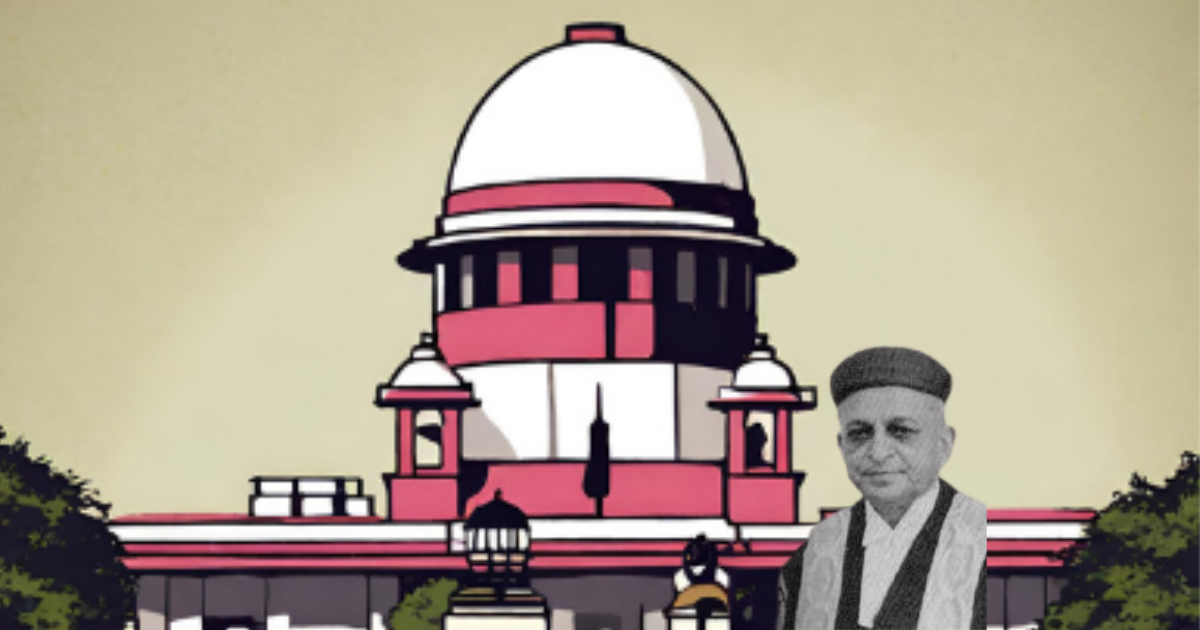In the urban sprawl of Mumbai, the case of Olga Tellis Vs. BMC (1985) unfolds as a legal drama that reshapes the contours of the right to livelihood and shelter for the underprivileged. The protagonist, Olga Tellis, leads a group of pavement dwellers in challenging the municipal authorities, culminating in a landmark judgment by the Supreme Court that affirms the constitutional rights of the homeless and downtrodden.
The case begins with Olga Tellis, a social worker, and a group of pavement dwellers facing eviction orders from the Bombay Municipal Corporation (BMC). The BMC, in its urban development efforts, sought to clear the pavements and relocate the dwellers to distant suburbs. Olga Tellis, along with her legal team led by renowned lawyer M.C. Bhandare, embarks on a legal journey to challenge the eviction, asserting the fundamental right to life and livelihood under Article 21 of the Constitution.
The legal narrative pivots around the arguments presented by Olga Tellis and her legal team before the Supreme Court. The crux of their contention lies in the assertion that the right to life enshrined in Article 21 encompasses not only the right to exist but also the right to livelihood, shelter, and a dignified life. The argument draws inspiration from previous judgments such as Mohini Jain v. State of Karnataka (1992) and Shantistar Builders v. Narayan Khimalal Totame (1990), emphasizing the expansive interpretation of the right to life.
The legal analysis in Olga Tellis’ case ventures into uncharted territory, addressing the interplay between urban development policies and the constitutional rights of the marginalized. The Supreme Court, led by Chief Justice Y.V. Chandrachud and a bench of distinguished justices, grapples with the constitutional dimensions of the right to life, livelihood, and shelter. The judgment revisits precedents such as Maneka Gandhi v. Union of India (1978), reaffirming the holistic interpretation of Article 21.
In a groundbreaking judgment, the Supreme Court rules in favor of Olga Tellis and the pavement dwellers. The Court holds that the right to life under Article 21 includes the right to livelihood and shelter, and any eviction that deprives individuals of their livelihood must be in accordance with the principles of natural justice. The judgment establishes guidelines for evictions, ensuring that the fundamental rights of the urban poor are protected in the process.
The legal echoes of Olga Tellis’ case resonate through subsequent urban development policies. The judgment prompts a reevaluation of eviction practices, urging municipal authorities to adopt a more compassionate and rights-based approach. It becomes a cornerstone for the recognition of the right to livelihood and shelter in urban spaces, influencing legislative changes and empowering the marginalized communities.
There is no short term or marginal solution to the question of squatter colonies, nor are such colonies unique to the cities of India. Every country, during its historical evolution, has faced the problem of squatter settlements and most countries of the under-developed world face this problem today. Even the highly developed affluent societies face the same problem, though with their larger resources and smaller populations, their task is far less difficult. The forcible eviction of squatters, even if they are resettled in other sites, totally disrupts the economic life of the household. It has been a common experience of the administrators and planners that when resettlement is forcibly done, squatters eventually sell their new plots and return to their original sites near their place of employment. Therefore, what is of crucial importance to the question of thinning out the squatters’ colonies in metropolitan cities is to create new opportunities for employment in the rural sector and to spread the existing job opportunities evenly in urban areas. Apart from the further misery and degradation which it involves, eviction of slum and pavement dwellers is an ineffective remedy for decongesting the cities. In a highly readable and moving account of the problems which the poor have to face, Susan George says: (’How the other Half Dies The Real Reasons for World Hunger’ (Polican books). “So long as thorough going land reform, re- grouping and distribution of resources to the poorest, bottom half of the population does not take place, Third World countries can go on increasing their production until hell freezes and hunger will remain, for the production will go to those who already have plenty to the developed world or to the wealthy in the Third World itself. Poverty and hunger walk hand in hand. We will close with a quotation from the same book which has a massage: 98 “Malnourished babies, wasted mothers, emaciated corpses in the streets of Asia have definite and definable reasons for existing. Hunger may have been the human race’s constant companion, and ’the poor may always be with us’, but in the twentieth century, one cannot take this fatalistic view of the destiny of millions of fellow creatures. Their condition is not inevitable but is caused by identifiable forces within the province of rational, human control”.
To summarise, we hold that no person has the right to encroach, by erecting a structure or otherwise, on footpaths, pavements or any other place reserved or earmarked for a public purpose like, for example, a garden or a playground; that the provision contained in section 314 of the Bombay Municipal Corporation Act is not unreasonable in the circumstances of the case; and that, the Kamraj Nagar Basti is situated on an accessory road leading to the Western Express Highway. We have referred to the assurances given by the State Government in its pleadings here which, we repeat, must be made good. Stated briefly, pavement dwellers who were censused or who happened to be censused in 1976 should be given, though not as a condition precedent to their removal, alternate pitches at Malavani or at such other convenient place as the Government considers reasonable but not farther away in terms of distance; slum dwellers who were given identity cards and whose dwellings were numbered in the 1976 census must be given alternate sites for their resettlement; slums which have been in existence for a long time, say for twenty years or more, and which have been improved and developed will not be removed unless the land on which they stand or the appurtenant land, is required for a public purposes, in which case, alternate sites or accommodation will be provided to them, the ’Low Income Scheme Shelter Programme’ which is proposed to be undertaken with the aid of the World Bank will be pursued earnestly; and, the Slum Upgradation Programme (SUP)’ under which basic amenities are to be given to slum dwellers will be implemented without delay. In order to minimise the hardship involved in any eviction, we direct that the slums, wherever situated, will not be removed until one month after the end of the current monsoon season, that is, until October 31,1985 and, thereafter, only in accordance with this judgment. If any slum is required to be removed before that date, parties may apply to this Court. Pavement dwellers, whether censused or uncensused, will not be removed until the same date viz. October 31, 1985. 99 The Writ Petitions will stand disposed of accordingly. There will be no order as to costs.
Citation: 1986 AIR 180 1985 SCR Supl. (2) 51 1985 SCC (3) 545 1985 SCALE (2)5
Case Title: OLGA TELLIS & ORS. Vs. BOMBAY MUNICIPAL CORPORATION & ORS. ETC.



